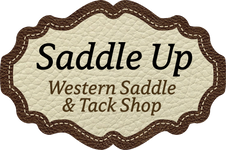Myler Bitting System: Level One
Posted by Saddle Up on Jun 3rd 2015
Myler designed the Level One single jointed snaffle bits to be used for young horses or horses with very little training. The purpose for Level One bits is to save the bars until the horse is more mature.
A single jointed snaffle restricts the tongue, collapses on the bars, and pinches the corners of the mouth. To get an idea of how the single joint is working on your horse's tongue, press a finger into the center of your own tongue. You should feel a gag like reaction. This is what happens in the horse's mouth when you apply pressure with a snaffle bit. Remember, a bit is only designed to be a communication tool between you and your horse. Especially while training a young horse it is vital to release the pressure on the bit the moment the horse does what you are asking. The narrower the center of the snaffle the stronger of a signal you will have. The wider the center the softer and more comfortable the signal will be.
A single joint does not work on the palate of a horse. When you are riding and squeeze the reins the angle of the bit to your hands causes the bit to go down not up. However, there is a danger when you are on the ground, with the reins over the horse's head and leading him. The angle from which you are pulling the snaffle changes from being above, to below, causing the reins to come to the front of the bit and causing the snaffle to pop up. This a way you could accidentally bruise your horse's palate so be careful.

(photo taken from imgarcade.com)
A lot of single jointed snaffles are straight. Myler curves the bit through the mouthpiece to alleviate the sudden (and sometimes painful) pinch on the corners of the mouth as well as the tongue. A curved bit is way gentler and has less of a nut-cracker action in the middle.

(photo taken from sustainabledressage.net)
Now that you have an idea of how snaffles work, let's take a look at some common ones.
Loose Ring Snaffle: A very common bit, especially for starting young horses. It is a very drag and pull bit as the amount of lift and pressure you have is limited by the way the ring moves within the bit.

(photo taken from stagecoachwest.com)
D-Ring Snaffle: This bit has the downward pressure that the loose-ring lacks, however a mis-communication will occur if you are in need of lift in the bit. If you ask for lift on one side it will only cause more downward pressure on the tongue which encourages the horse to go down into the bit instead of lifting.

(photo taken from equinenow.com)
Comfort Snaffle: This snaffle was designed by Myler to correct the mis-communication of the D-ring snaffle. Because of the design this allows you to keep the downward pressure on the tongue to ask the horse to come to you, but allows individual lift on each side.

(photo taken from yourhorse.co.uk)
Three piece bits have a connector in the middle of the mouthpiece, this gives the horse something to play with. They are typically a dogbone shaped piece, or in the case of the Myler bits, a round cylinder. All of the Myler comfort snaffles are three piece bits, which are very comfortable, have the downward pressure, as well as the individual lifts and almost never catch when you repeatedly move one side of the bit.

(photo taken from toklat.com)
It is important to give your young horse or untrained horse the best bit experience possible. Make it as comfortable and well-paced as you can. You'll want them to be sensitive later in their training, so don't damage that by placing a harsh bit in their mouth. Remember, you're teaching them a whole new language, so be patient and gentle with them. The long term rewards are so worth it.
"A horse should be treated like a gentleman." -- Leland Stanford
~ Saddle Up
